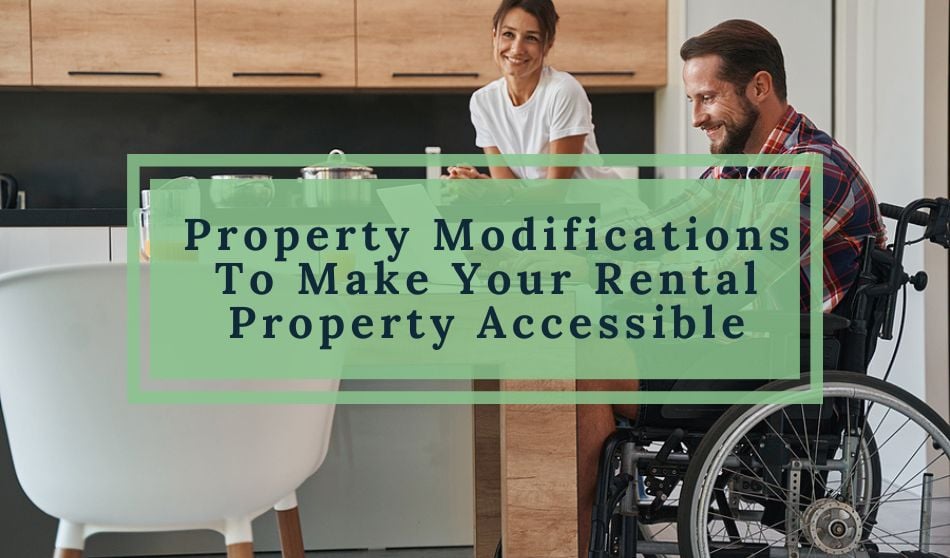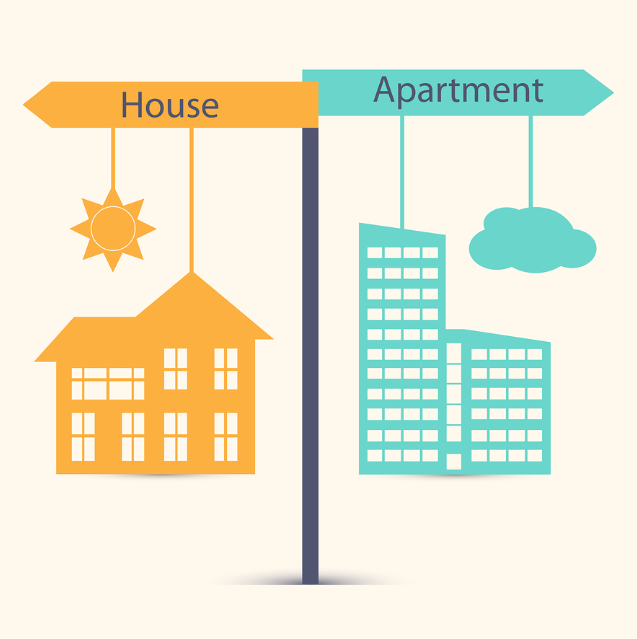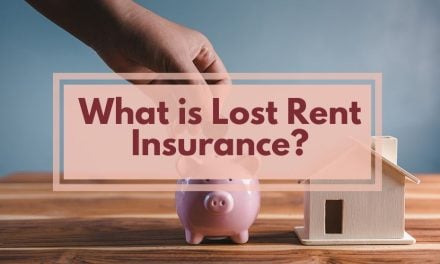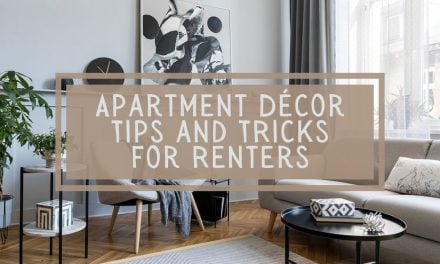
According to the Fair Housing Act, a tenant has the right to live in a rental property regardless of their disability status. Landlords cannot discriminate against tenants based on their disabilities nor deny them the right to rent a unit because of their disabilities. In fact, landlords are required to make reasonable accommodations so all tenants have equal access. And sometimes, it includes providing accessible living arrangements.
Financing Accommodations And Modifications
Typically, it’s a landlord’s responsibility to cover the expenses for requested accommodations, as long as a request is considered “reasonable”. Though many common accommodations are free or low cost, if implementing an accommodation will cause an undue burden or a fundamental alteration of the program, then a landlord is exempt from doing so. If structural modifications need to be done, in most cases, the cost falls on the tenant. Keep in mind that you will need to look up local, state, and federal guidelines to ensure you are in compliance–this is particularly crucial for multifamily property owners who must be in compliance with their public and shared spaces.
Recommended Accessibility Modifications
Implementing accessibility modifications that are beyond the standard ADA requirements in your area can widen your tenant pool and keep you in compliance as regulations change. Disabled tenants will appreciate finding a welcoming space that can accommodate their needs. Here are 20 ways you can make your property more friendly for those with disabilities.
Doorways
Doorways in rental properties can be a common source of difficulty for individuals with mobility impairments. Widening doorways can make it easier for tenants to navigate through the property with a wheelchair or walker. The standard doorway width is 32 inches, but widening it to 36 inches or more can greatly improve accessibility. This modification may require the assistance of a professional contractor, but it can be well worth the investment.
Ramps
Installing a ramp at the entrance of your rental property and on all multileveled access points can make a huge difference in accessibility for tenants who use mobility aids such as wheelchairs or walkers. Ramps can be made of various materials such as wood, metal, or concrete, and can be customized to fit the aesthetic of your property. When installing a ramp, it’s important to consider the slope and width of the ramp to ensure it meets accessibility standards. Consult a qualified urban planning professional for adequate placement of ramps.
In addition to indoor ramps, it’s important to ensure that tenants with mobility impairments can access outdoor areas of the property. Installing wheelchair ramps for outdoor areas such as patios, decks, and gardens can provide tenants with the opportunity to enjoy these spaces without restriction.
Grab Bars
Installing grab bars in key areas of the property, such as bathrooms and hallways, can provide additional support and stability for tenants with mobility impairments. Grab bars can be installed in a variety of styles and finishes to match the decor of your rental property. They can also be placed in areas such as the kitchen to provide support when reaching for cabinets or appliances. If you’re considering installing them, be sure they are at the correct height and can support an average adult’s weight.
Handrails
Handrails are another important modification that can provide support and stability for tenants with mobility impairments. Handrails can be installed along staircases, walkways, and outdoor areas to help tenants navigate through the property safely. Keep in mind however, that handrails should be installed at a height that is comfortable for the tenant and should be securely fastened to the wall.
Lever-Style Door Handles
Traditional door knobs can be difficult to use for individuals with limited hand strength or dexterity. Replacing door knobs with accessible flat handles can make it easier for tenants to open and close doors throughout the property. They can be installed on both interior and exterior doors and can be found in a variety of finishes to match the decor of your rental property.
Lowered Countertops And Cabinets
Lowering countertops and cabinets can make it easier for tenants who use wheelchairs or walkers to access the kitchen and other areas of the property. With countertops at arms reach, tenants with disabilities will find it easier to prepare food and complete everyday tasks. While these modifications may require the assistance of a professional contractor, they can be well worth the investment in the long run.
Lowered Toilets And Accessible Faucets
For individuals with mobility issues, installing accessible fixtures, such as lowered toilets and lavatories, are a necessity. Designing bathrooms with accessible faucets that motion sensors can switch on will also be much appreciated.
Walk-In Showers
Traditional bathtubs and showers can be difficult to navigate for disabled tenants. However, a walk-in shower allows tenants to bathe without the risk of slipping or falling safely. Walk-in showers can also be customized with features such as grab bars, built-in seating, and handheld showerheads to improve accessibility further.
Adjustable Shower Heads
Adjustable shower heads can provide additional flexibility since they can be adjusted to different heights and angles to accommodate tenants of varying heights and abilities. Some can also be removed from the wall to provide for tenants who require assistance with bathing.
Stair Lifts
As you might imagine, staircases can be a significant obstacle for tenants with mobility impairments. Installing a stair lift can provide a safe and efficient way for tenants to access different levels of the property. Stair lifts can be customized to fit the specific layout of your rental property and can be removed when no longer needed.
Accessible Parking Spaces
Accessible parking spaces are a crucial component of accessibility for tenants who use mobility aids or have mobility impairments. Landlords should ensure that there are designated accessible parking spaces on the property that meet accessibility standards, including a minimum width of 8 feet and a surface that is level and free of obstacles. Accessible parking spaces should also be located in close proximity to the entrance of the rental property.
Vibrating Smoke Detectors
Smoke detectors are an important safety feature in any rental property, but they can be difficult for individuals with hearing impairments to hear. Vibrating or strobing smoke detectors can provide an alternative solution by alerting tenants with a vibration or flashing light instead of an audible alarm. These detectors can be installed in key areas of the property such as bedrooms and living areas.
Textured Flooring
Repair or remove any uneven or damaged flooring, such as loose carpeting or broken tiles. Replacing it with textured flooring can provide additional traction for tenants with disabilities, reducing the likelihood of slips and falls. To provide additional safety and stability, Non-slip flooring can be installed in areas such as entryways, bathrooms, kitchens, exterior walkways, and any other surface that can become slippery when wet.
Automatic Door Openers
Installing automatic door openers can provide greater accessibility for tenants with mobility impairments. These devices can be installed on exterior doors as well as interior doors throughout the property. Automatic door openers can be operated by a push button or motion sensor and can be programmed to adjust to different speeds and opening widths.
Visual Doorbells
Visual doorbells can provide an alternative solution for tenants with hearing impairments who may have difficulty hearing traditional doorbells or knockers. Visual doorbells include a flashing light or other visual cue to alert tenants when someone is at the door. These devices can be installed at the entrance of the rental property and can be easily programmed to suit individual needs.
Side-By-Side Refrigerator
A side-by-side design allows for easy access to both the refrigerator and freezer compartments, without the need to reach or bend down low. This can be particularly helpful for individuals with mobility issues, as it reduces the risk of strain or injury when retrieving items. Additionally, newer refrigerator models often come equipped with energy-saving features, making the upgrade a smart investment for landlords and tenants alike.
Smart Technology Home System
Consider implementing a smart technology home system, which can automate several in-home tasks and greatly improve the quality of life for disabled tenants. With a variety of devices and systems available, tenants can automate several in-home tasks, such as controlling lighting, temperature, and appliances, through voice commands or a smartphone app. This can be particularly beneficial for individuals with limited mobility, as it reduces the need to physically interact with switches or knobs. Additionally, smart home technology can provide added security through features such as video doorbells or remote-controlled door locks, allowing disabled tenants to feel safer and more independent in their home. Likewise, automatic systems that allow remote opening of doorways, garages, and gates is another addition that can improve the accessibility of your property.
Lowered Light Switches
Lowering light switches to a height that is accessible from a seated position allows for easier use and greater independence. Alternatively, motion-sensing lighting systems can automatically turn lights on and off based on movement within a room, eliminating the need for tenants to physically interact with switches. This can be particularly beneficial for individuals with limited hand dexterity or strength. By implementing these changes, landlords can improve the accessibility of their rental property and provide disabled tenants with greater comfort and independence in their daily lives.
Paved Walkways And Driveways
Paving walkways and driveways to make them obstacle-free is an important consideration for landlords seeking to make their properties more accessible to tenants with disabilities. Uneven or damaged pavement can pose a serious obstacle to those with mobility challenges, particularly those using wheelchairs, crutches or other assistive devices. By ensuring that all access points are well-paved and obstacle-free, landlords can provide tenants with greater mobility and independence, while also reducing the risk of accidents or injuries. Additionally, well-paved walkways and driveways can make it easier for tenants to navigate their surroundings, particularly during inclement weather conditions such as rain or snow. This simple modification can go a long way towards improving the accessibility and safety of a rental property, making it more attractive to all prospective tenants, especially those with disabilities.
Furniture Arrangements
Furniture arrangements should allow enough clearance for users of assistive devices to move around comfortably. A cluttered or cramped living space can be especially challenging for tenants who use wheelchairs, walkers, or other mobility aids. By providing ample space, tenants can navigate their living areas with ease and avoid accidents or injuries. Additionally, furniture arrangements can impact the accessibility of important features such as doors, windows, and outlets. Ensuring adequate clearance can make it easier for tenants to reach these features and use them without difficulty.
Mailboxes
By installing a mailbox at a lower level, or substituting current ones with accessible models can help tenants with disabilities access their mail without assistance, promoting independence and self-sufficiency. Accessible mailbox models come in various shapes and sizes, including those with larger doors, keyless entry, and even braille labeling. These models can be a valuable addition to a rental property, demonstrating a landlord’s commitment to creating an inclusive and accessible living environment for all tenants.
Accessibility Matters
As a landlord or property manager, it’s important to know how you can provide consistent, fair service to all tenants no matter what their circumstances may be. Making your rental property accessible for people with disabilities is not only a legal obligation but also a moral responsibility. shelter, regardless of their physical or mental abilities. By making reasonable accommodations and modifications to make your rental more accessible, you can foster a positive and inclusive community, which can benefit all tenants and you as a landlord too.






